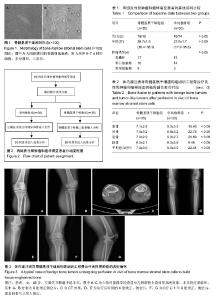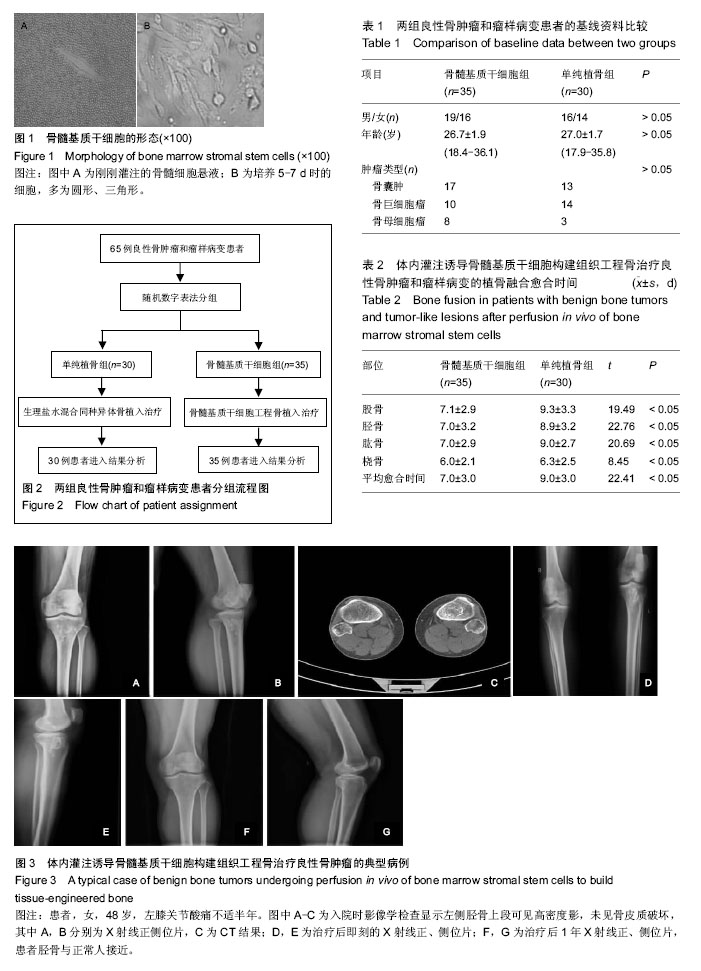| [1] Jiang W, Shi J, Li W, et al. Three dimensional melt-deposition of polycaprolactone/bio-derived hydroxyapatite composite into scaffold for bone repair. J Biomater Sci Polym Ed. 2013;24(5):539-550.
[2] 张凯,王大平,朱伟民,等.骨髓间充质干细胞与纳米羟基磷灰石支架材料的体外相容性研究[J].中国临床解剖学杂志,2011,29(2):213-221.
[3] 王林,马真胜,雷伟,等.一体化灌注法体外构建活化人工骨的实验研究[J].中华创伤骨科杂志,2013,15(6): 1671-1675.
[4] 向强,邓聪颖,郑文杰,等.成骨细胞特异性钙黏蛋白基因转染对人骨髓基质干细胞成骨分化影响的研究[J].中华创伤骨科杂志,2009,11(3):1105-1108.
[5] Akazawa T, Murata M, lto M, et al. Characterization of bio-absorbable and biomimetic apatite/collagen composite powders derived from fish bone and skin by the dissolution-precipitation method. Key Eng Mater. 2012;493-494:114-119.
[6] Mo XT, Yang ZM, Qin TW. Effects of 20% demineralization on surface physical properties of compact bone scaffold and bone remodeling response at interface after orthotopic implantation. Bone. 2009; 45(2):301-308.
[7] Santhagunam A, Dos Santos F, Madeira C, et al. Isolation and ex vivo expansion of synovial mesenchymal stromal cells for cartilage repair. Cytotherapy. 2014;16(4):440-453.
[8] Rui YF, Du L, Wang Y, et al. Bone morphogenetic protein 2 promotes transforming growth factor β3-induced chondrogenesis of human osteoarthritic synovium-derived stem cells. Chin Med J (Engl). 2010; 123(21):3040-3048.
[9] Xu T, Wu M, Feng J, et al. RhoA/Rho kinase signaling regulates transforming growth factor-β1-induced chondrogenesis and actin organization of synovium-derived mesenchymal stem cells through interaction with the Smad pathway. Int J Mol Med. 2012;30(5):1119-1125.
[10] Kim YI, Ryu JS, Yeo JE, et al. Overexpression of TGF-β1 enhances chondrogenic differentiation and proliferation of human synovium-derived stem cells. Biochem Biophys Res Commun. 2014;450(4): 1593-1599.
[11] Lee JC, Lee SY, Min HJ, et al. Synovium-derived mesenchymal stem cells encapsulated in a novel injectable gel can repair osteochondral defects in a rabbit model. Tissue Eng Part A. 2012;18(19-20): 2173-2186.
[12] Lee JC, Min HJ, Park HJ, et al. Synovial membrane- derived mesenchymal stem cells supported by platelet-rich plasma can repair osteochondral defects in a rabbit model. Arthroscopy. 2013;29(6):1034-1046.
[13] 加亮,侯树勋,衷鸿宾,等.脱脂程序对异体松质骨免疫原性影响的实验研究[J].中国矫形外科杂志,2010,18(9): 762-767.
[14] Miller BJ, Virkus WW. Intercalary allograft reconstructions using a compressible intramedullary nail: a preliminary report. Clin Orthop Relat Res. 2010; 468(9):2507-2513.
[15] Abed YY, Beltrami G, Campanacci DA, et al. Biological reconstruction after resection of bone tumours around the knee: long-term follow-up. J Bone Joint Surg Br. 2009;91(10):1366-1372.
[16] 刘帅,赵卫东,陈鹏,等.MR全身弥散扫描在多发性骨肿瘤性病变中的应用研究[J].中国临床医学影像杂志,2011, 22(11):790-793.
[17] 齐滋华,李传福,马祥兴,等.3T磁共振氢质子波谱在骨与软组织肿瘤诊断中的应用价值[J].中国医学科学院学报, 2011,33(5):504-510.
[18] Wilhelm T, Stieltjes B, Schlemmer HP. Whole-body- MR-diffusion weighted imaging in oncology. Rofo. 2013;184(10):950-958.
[19] Baliaka A, Balis G, Michalopoulou-Manoloutsiou E, et al. Primary angiosarcoma of bone. A case report. Hippokratia. 2013;17(2):180-182.
[20] 许会法,邵增务.控制骶骨肿瘤术中出血方法的应用现状及进展[J].中国骨肿瘤骨病,2009,8(4):245-248.
[21] Baltsavias G, Valavanis A. Endovascular occlusion of a lacerated primitive trigeminal artery during surgical resection of clival chordoma. a case report. Interv Neuroradiol. 2010;16(2):204-207.
[22] Liebrenz M, Stohler R, Borgeat A. Repeated intravenous ketamine therapy in a patient with treatment-resistant major depression. World J Biol Psychiatry. 2009;10(4 Pt 2):640-643.
[23] Nikoghosyan AV, Karapanagiotou-Schenkel I, Münter MW, et al. Randomised trial of proton vs. carbon ion radiation therapy in patients with chordoma of the skull base, clinical phase III study HIT-1-Study. BMC Cancer. 2010;10:607.
[24] 管京乐,汪蓓蓓,韦传军,等.经皮瘤内注射平阳霉素碘油化疗乳剂治疗复发性骶尾部脊索瘤[J].南方医科大学学报, 2010,30(10):2366-2369.
[25] 时红萍,张秋宁,刘国庆,等.唑来膦酸联合放射治疗治疗恶性肿瘤骨转移的meta分析[J].中国循证医学杂志,2013, 13(7):858-867.
[26] 郑荣寿,张思维,吴良有,等.中国肿瘤登记地区2008年恶性肿瘤发病和死亡分析[J].中国肿瘤,2012,21(1):1-12.
[27] 薛铮,陈亚堃,钱钧强.放疗联合唑来膦酸治疗恶性肿瘤骨转移的随机对照研究[J].西北药学杂志,2012,27(2): 162-163.
[28] Benedetti MG, Bonatti E, Malfitano C, et al. Comparison of allograft-prosthetic composite reconstruction and modular prosthetic replacement in proximal femur bone tumors: functional assessment by gait analysis in 20 patients. Acta Orthop. 2013;84(2): 218-223.
[29] Malhotra R, Kiran Kumar GN, K Digge V, et al. The clinical and radiological evaluation of the use of an allograft-prosthesis composite in the treatment of proximal femoral giant cell tumours. Bone Joint J. 2014;96-B(8):1106-1110.
[30] 丁焕文,陈志源,涂强,等.计算机辅助股骨粗隆部肿瘤精确切除和保髋重建的临床研究[J].中华关节外科杂志:电子版, 2015,9(1):18-24.
[31] 丁焕文,贾军锋,沈健坚,等.计算机辅助下高位骶骨肿瘤的精确切除及缺损部分的重建[J].中国骨与关节杂志, 2013, (9):484-489. |

